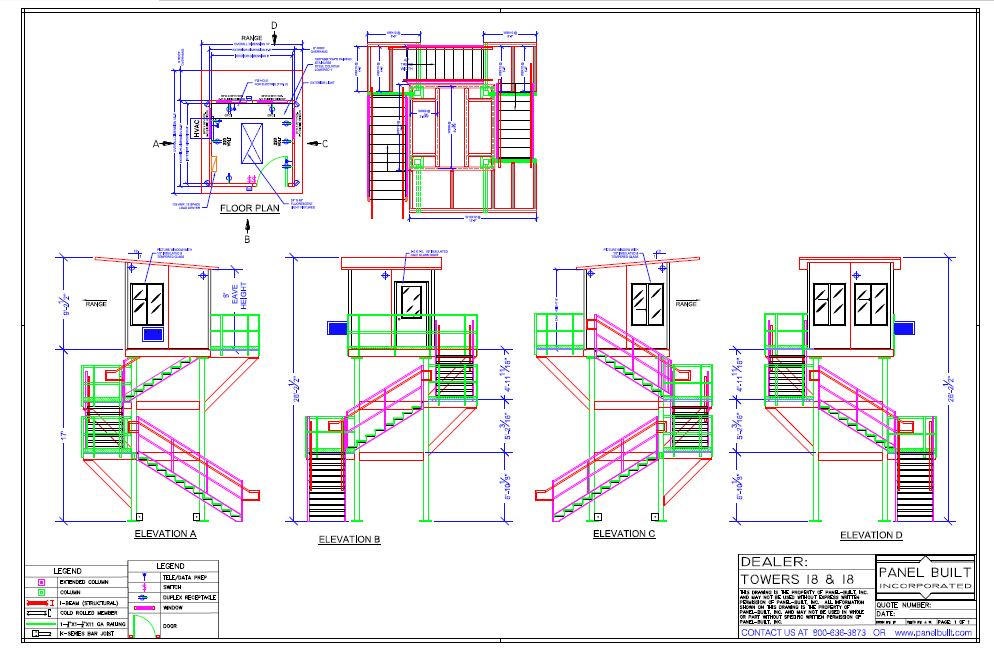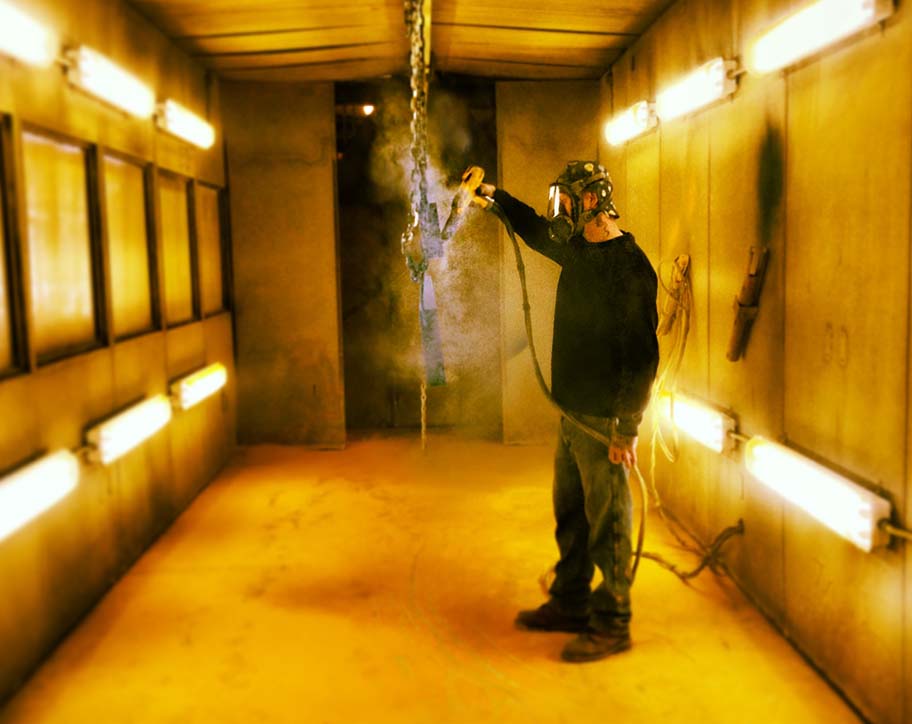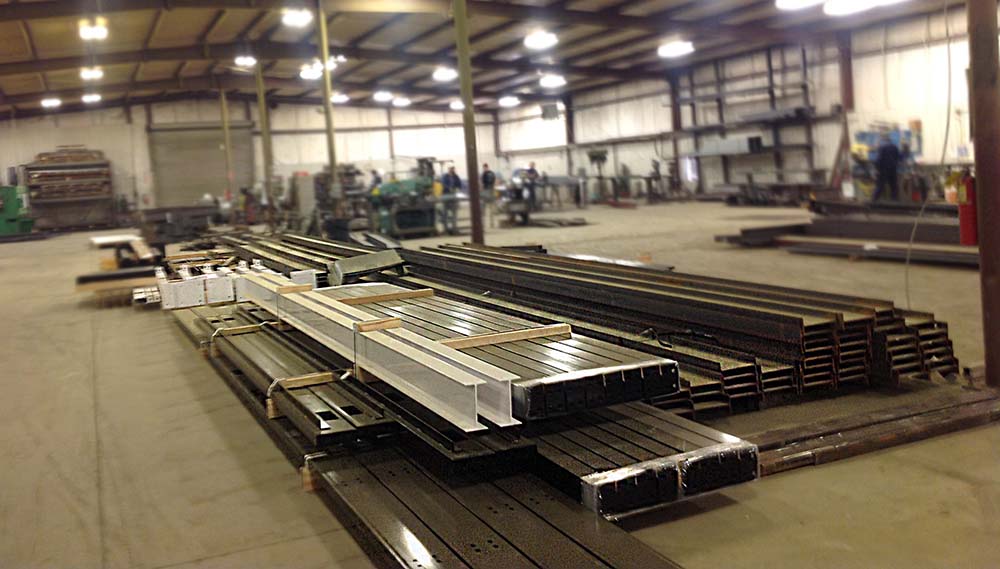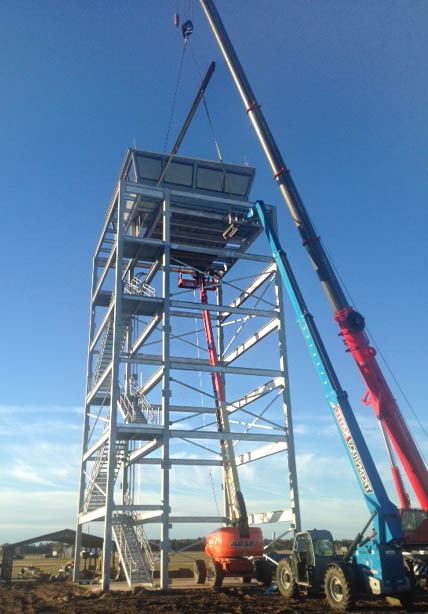The Offsite Construction Guide
Blog
With the demands of the construction sector growing year after year, the industry has been looking for new and unique avenues to satisfy project requirements. Many issues have been growing in the past couple of years. There are a number of companies that are demanding shorter lead times on their construction projects so they can open the facility sooner and have a quicker return on investment. With an increased growth in construction spending, this has put a great strain on companies to keep up with project times, not to mention the labor shortage construction companies are seeing.
Many companies have decided to turn to an alternative to “stick-built” construction: offsite construction. Offsite construction, commonly known as prefabricated construction soothes a number of the problems that plague the construction sector at this time. With the majority of the building being constructed or manufactured in a controlled, factory-like environment, offsite construction offers an interesting channel for many groups looking for new ways to expand.
However, offsite construction is definitely not a new phenomenon. In fact, the process itself has existed for around 150 years, but it also has had a few stigmas surrounding it from the past. Many view offsite construction as a “cookie cutter” solution to their space needs or view it as being of lower quality. Most of these sentiments can probably be traced back to earlier days of modular construction practices and an overall unfamiliarity with the process. Nevertheless, today’s offsite construction industry has been vastly transformed, and in this post, we will go through the offsite construction process to see how it all fits together.
Design Process
The offsite construction process begins where all construction processes begin, in the design phase.
 And here also starts one of the biggest and most common myths you will see pertaining to offsite construction, a lack of design options and flexibility. The fact that the building is constructed offsite has no influence over the design phase of the project. Architects and engineers are still able to craft a building as they see fit.
And here also starts one of the biggest and most common myths you will see pertaining to offsite construction, a lack of design options and flexibility. The fact that the building is constructed offsite has no influence over the design phase of the project. Architects and engineers are still able to craft a building as they see fit.
Designing a modular construction project is very similar to a traditional construction project, with a few nuances to consider. The architect must make all the same considerations considering code compliance, especially in projects consisting of large, multi-story buildings. However, when designing the building, you obviously need to take into account that these buildings and structures are indeed built in modules and transported to the site in that form.
This is where the idea of offsite construction as a “cookie cutter” solution comes in. Many in the industry understand that these structures are designed in modules, but they do not consider that these modules can be organized in any arrangement needed, and each module can be designed to fit any shape or form needed.
In this sense, these modules are like toy building blocks for an architect or project manager. They can fit together in a wide range of ways, offering limitless variety in their design phase.Manufacturing Process
 After the structure’s design is agreed upon and inspected by a third party, the manufacturing process can begin. Obviously, this phase of the project is where offsite construction is the most unique and really has an opportunity to shine.
After the structure’s design is agreed upon and inspected by a third party, the manufacturing process can begin. Obviously, this phase of the project is where offsite construction is the most unique and really has an opportunity to shine.
As noted in our previous post, “Sustainable Construction Trends for 2017,” modular/offsite construction provides a potential solution to the construction industry’s labor shortage as well.
One point that cannot be glossed over in understanding offsite construction is the added control that is gained over the construction and quality of the structure. This control is gained by eliminating as many variables as possible from the process.
 Looking at a traditional construction project, all work is done at the construction site. These sites can have hundreds of workers moving around at all times, materials being transported from one area to another, and the use of heavy machinery throughout the site. The project also takes place outside, so the construction of the structure will be influenced greatly by the weather on any given day. All of these things can cause disruption in a traditional construction project. These disruptions can lead to a few different outcomes: damaging of materials or equipment, delaying the construction schedule, or workplace accidents (which the construction industry has the most incidences in comparison to other sectors).
Looking at a traditional construction project, all work is done at the construction site. These sites can have hundreds of workers moving around at all times, materials being transported from one area to another, and the use of heavy machinery throughout the site. The project also takes place outside, so the construction of the structure will be influenced greatly by the weather on any given day. All of these things can cause disruption in a traditional construction project. These disruptions can lead to a few different outcomes: damaging of materials or equipment, delaying the construction schedule, or workplace accidents (which the construction industry has the most incidences in comparison to other sectors).

Installation Process
After the structure has been delivered to the job site, the structure can be installed into its proper location, either permanently or temporarily. For our modular structures, the buildings can be constructed on a forkliftable steel base, making the transportation of the structure at the job site far easier. Next, the structure is anchored to a concrete slab. Finally, hook up any necessary utilities, and the building is ready to go!
As you can imagine, a modular construction job site will have far less commotion and traffic in comparison to stick-built. When installing our pre-assembled buildings, all members of the install team have one big modular structure to keep their attention on, rather than a ton of moving parts. This allows the workers to stay much more focused on the task at hand, reducing the chance of errors and accidents.
Also, with the building be manufactured in a facility away from the job site. The job site can be prepped for install while the building is being put together. With these two processes happening concurrently, the project time is reduced overall. Plus, the quick installation period and the lack of heavy machinery and materials creates minimal site disturbance. For areas like a school or manufacturing facility, that means your facility can stay up and running. For rural areas, offsite construction provides a quality product that may not be available in their area otherwise.
Panel Built delivers a turnkey product to solve your space needs with no hassle.
Overall, offsite construction can help you in a variety of unique ways and solve problems that have plagued the construction industry. With the amount of spending in the construction sector increasing and the number of available construction workers dwindling, offsite construction’s short lead times could prove vital to keep up with demand. Structures from full-blown hotels to classrooms to observation towers to bullet proof guard shacks, offsite construction take care of them all. Recently, the world’s largest hotel company, Marriott, has dedicated itself to offsite construction with a 50-hotel deal utilizing the construction concept. With more and more major companies taking advantage of the benefits of offsite construction, the previous stigma against offsite construction is quickly going away. Panel Built, Inc. has over 20 years of experience in the industry. We have built everything from “air attack training towers” to maintenance platforms for commercial airplanes.
Ultimately, with all the different uses for offsite construction makes it possible to utilize it in nearly any construction project, big or small. If think offsite construction can help you with your next project, just give us a call at 800.636.3873 or email us at info@panelbuilt.com. We would be more than happy to work with you on your project.